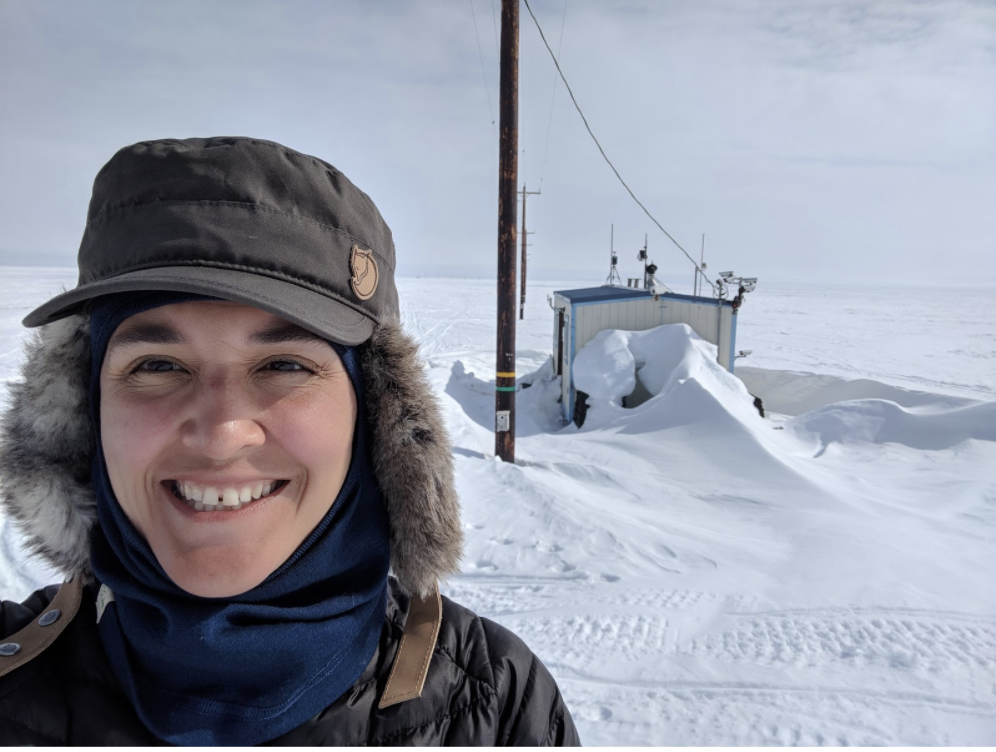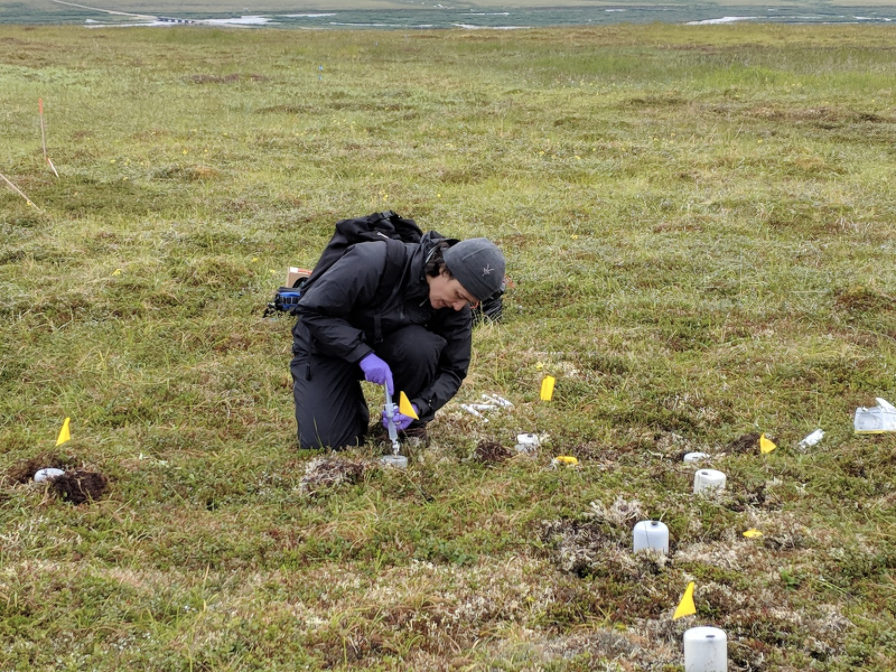
Look up on a clear night and you might see quite a few of our galaxy’s 100 billion stars. Look down, however, and you’ll be hard pressed to see any of the 10 trillion cells in a single gram of soil.
“Soil has amazing amounts of microbial cells,” said Neslihan Taş, a research scientist in Berkeley Lab’s Earth and Environmental Sciences Area.
Scientists know very little about the role of microbes, especially the ones in soil, according to Taş. She compares her work to what astrophysicists do: While the latter tries to tease very fine scale information from a large number of stars, she does the same for soil microbes.
The microbiomes of different soils around the world vary widely. Taş’ focus is Arctic soils — specifically permafrost. She currently leads the permafrost microbiology component of the Department of Energy’s (DOE) multi-institutional NGEE (Next-Generation Ecosystem Experiments) Arctic project for Berkeley Lab. In 2017, she also received a prestigious DOE Early Career Research Award for a project examining how microbial processes, biogeochemical transformations, and hydrology interact during permafrost thaw in Alaska to drive biogeochemical cycles in Arctic soils.
The Arctic has been glaciated for the longest period of time, but it once had a much warmer environment. This history of varied climate cycles differentiate Arctic soils, and subsequently its microbes and biogeochemical cycles, from most other environments on Earth.
There is also relatively high microbial diversity in permafrost, where some microorganisms can be active at subzero temperatures. Climate change and subsequent permafrost thaw may promote microbial activity, resulting in increased potential for greenhouse gas emissions. Taş studies how the microbiomes of Arctic soils will respond to changes in temperature and emit greenhouse gases such as carbon dioxide, methane, and nitrous oxide.
“My specialty as a microbiologist is trying to understand how soil microbes are responding to the changing climate,” said Taş. “Microbes are stewards of biogeochemical cycles of Earth. They sequester carbon, but they also break down organic material and cycle nitrogen through the soils. We are interested in finding where these functions are being best utilized in what locations and why.”

Samples to sequencing to server
Taş’ research consists of three parts: fieldwork, sequencing, and analysis.
First, her group goes scouting to learn about the landscape of interest. She talks to geophysics and biogeochemistry specialists that study soil properties and greenhouse gas fluxes to determine where, how, and how often to sample. When these decisions are made, she conducts a sampling campaign, either collecting topsoil or drilling large cores to collect from deeper underground. She brings these samples back to extract nucleic acids such as DNA or RNA in lab. Then, the researchers may collaborate with the Department of Energy’s Joint Genome Institute or other facilities for sequencing.
With the sequencing data in hand, she’s ready for the analysis, where she spends most of her time. Taş has recently been working to reconstruct microbial genomes from individual short-reads. Short-read sequencing produces a fraction of DNA around 100 to 250 base pairs in length. From these pieces, she tries to reconstruct a whole microbial genome — on average 3 million base pairs — in order to analyze the entire community. Reconstructing a genome is not always possible, so her group also does gene-based discovery, in which they search for genes important in greenhouse gas production.
When analyzing large datasets, sequence data helps scientists understand how soil microbes can respond to changes expected to happen by studying their functions. If the temperature changes, what kind of response can we expect from these microbes? What about if the soil gets wetter or drier? Knowing the current state of soil microbes in relation to these questions can help create predictive tools to inform future environmental decisions.
When Taş was a PhD student, researchers were limited to simpler techniques such as comparative analyses (called BLAST) and building trees of sequences. Both were possible using only a desktop computer.
“Now, we’re more ambitious and asking larger questions of the data that we were not able to do before,” she said. “The combination of computation and availability of high quality, high-throughput has data changed the field of microbial ecology very drastically.”
The scale of sequencing today leads to “simply better science,” according to Taş. Even just a few years ago, 10 or 15 soil samples would be considered a large data set. A researcher today might request sequencing of hundreds of samples, which is only possible with increased computational power.
Analysis of the large-scale data generated by nucleic acid-based sequencing requires computing clusters that have much more resources than a single computer. Recent advances in the computational development of sequencing data analysis have made the process more efficient, but computational researchers are still trying to keep up with all the data generated on the wet lab side.
For her sequence analysis, Taş partners with the IT Division’s Science IT team to leverage Lawrencium, the Lab’s institutional cluster, and her own dedicated computational server, also managed by Science IT.
“The data analysis on the Lawrencium cluster was challenging to the point that additional computational resources were required,” said HPC systems engineer Susan James. “Our team ended up designing a computational server for Dr Taş’ team which would lay the groundwork for testing and troubleshooting issues and, ultimately, has helped to streamline data analysis and the workflow on the Lawrencium cluster.”
On the testing side, Science IT sets the groundwork by helping Taş troubleshoot her scripts so that her group can conduct trials of the data analysis. The group works in constant communication with her to develop frameworks for streamlining computational pipelines.
Taş called Science IT her “lifeline.”
“What is really impressive to me is depending on availability, we get to work with multiple people,” said Taş. “Everybody we work with knows what we are doing. It’s an excellent team to work with because there are always different people with expertise which enriches our work and provides support.”

